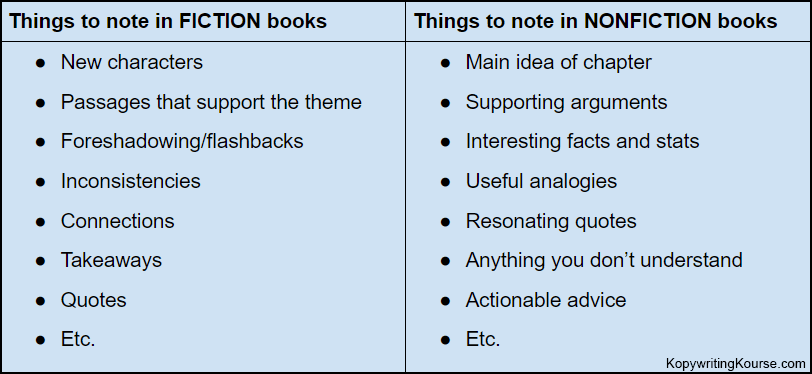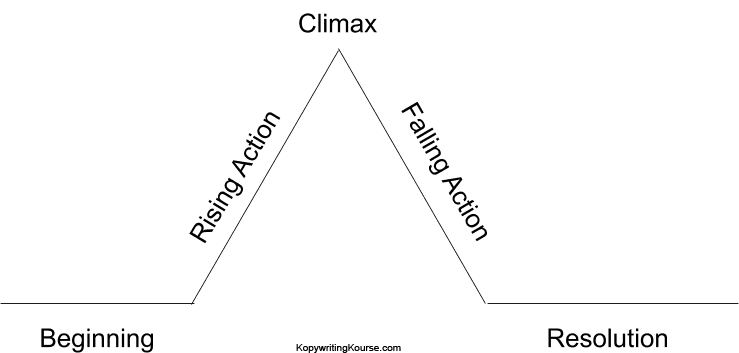How to Write a Book Summary, Step-by-Step (w/ Templates) - Copywriting Course
Curated from: copywritingcourse.com
Ideas, facts & insights covering these topics:
11 ideas
·6.66K reads
67
Explore the World's Best Ideas
Join today and uncover 100+ curated journeys from 50+ topics. Unlock access to our mobile app with extensive features.
What is a Book Summary?
A book summary is not a book review.
A book review is a description of the book including your opinions, interpretations, ideas, and critiques.
A book summary, sometimes called a synopsis, it recaps all the main ideas and does not include outside commentary.
330
1.4K reads
Why Write a Book Summary?
- It helps solidify what you’ve learned. Summarizing a book in your own words makes you reflect on the information that just entered your brain.
- It helps you quickly review ideas in the future. Why spend hours reading a book (especially non-fiction) if you’re just going to forget everything in a week?
- It helps others. People love the wisdom and insights that come from books. What they don’t love is spending their precious time to actually read said books.
321
603 reads
How to Write a Book Summary, Step-by-Step
- Decide who it’s for
- Start reading (with a “teacher mindset”)
- Highlight and take notes
- Write mini-summaries for each chapter
- Organize your mini-summaries
- Condense main points to a bullet list
- Use bullet list to write your final summary
346
849 reads
Decide Who It’s For
If it’s just for you, there are no rules. Feel free to leave out ideas you’re already familiar with (or don’t resonate with).
If it’s an assignment or you’ll be sharing with others, you have to be more objective and include things whether you agree with them or not.
307
493 reads
Start reading (with a “teacher mindset”)
Your mindset is important here. Don’t just blaze through pages as fast as you can. Instead, read each page as if you had to teach the material to someone afterward.
309
605 reads
Highlight and Take Notes
You might feel like it slows you down, but it’ll save you heaps of time in the long run.
- Highlight the book and take notes in the margins
- Use stickies to mark pages and take notes
- Take notes in a separate notebook
324
537 reads
Chapter Summary Worksheet Template (FICTION)
Just take some minutes at the end of each chapter and use your highlights to fill out these form.
- Chapter number:
- Chapter title:
- Setting:
- Characters in chapter:
- New insights about characters:
- Main events:
- Problems & Resolutions:
- Foreshadowing / Flashbacks:
- Important quotes and revelations:
- Connections and Inconsistencies:
- Themes:
- Other thoughts:
325
465 reads
Chapter Summary Worksheet Template (NON FICTION)
Just take some minutes at the end of each chapter and use your highlights to fill out these form.
- Chapter number:
- Chapter title:
- “Big ideas”:
- Arguments supporting big ideas:
- Interesting facts, stats, or analogies:
- Resonating quotes:
- Action steps:
- Other thoughts:
339
598 reads
Organize Your Mini-Summaries
For fiction books, group them by where they fall into the story structure:
- Beginning (Intro to characters, setting, problem)
- Rising Action (Tension around problem builds)
- Climax (Highest point in tension)
- Falling Action (Resolving loose ends after tension is resolved)
- Resolution (Closure)
For nonfiction books, organize your mini-summaries by topic (use the Table of Contents to help).
313
380 reads
Condense Main Points Into a Bullet List
Scan through each summary and pick out the most important ideas & plot points. Jot these down in bullet list form on a separate sheet of paper.
When deciding which fictional plot points to include, ask yourself, “Is this information vital for understanding the ‘big picture’ of the story?” If the answer is No, cut it.
For nonfiction books, make a bullet list of the main takeaways from each chapter (or topic) along with the best supporting arguments.
304
309 reads
Write Your Summary
All you have to do is convert your bullet list to paragraph form. The key here is to avoid rambling. Remember, this is a summary. You’re not re-writing the entire book.
If you have a specific page restriction, here’s another tip to stay under the limit:
Page Limit ÷ Number of Chapters in Book = Number of Summary Pages Per Chapter
So, if you have a five-page limit and there are 10 chapters in the book, you would write roughly ½ page for each chapter.
309
424 reads
IDEAS CURATED BY
I am the developer of my life; I build its foundation and choose its contents.
D. A. Majid's ideas are part of this journey:
Learn more about personaldevelopment with this collection
How to practice effectively
The importance of consistency
How to immerse yourself in the language
Related collections
Similar ideas
5 ideas
How to Write a Book Summary
samuelthomasdavies.com
8 ideas
How to Write Strong Paragraphs
grammarly.com
9 ideas
Read & Learn
20x Faster
without
deepstash
with
deepstash
with
deepstash
Personalized microlearning
—
100+ Learning Journeys
—
Access to 200,000+ ideas
—
Access to the mobile app
—
Unlimited idea saving
—
—
Unlimited history
—
—
Unlimited listening to ideas
—
—
Downloading & offline access
—
—
Supercharge your mind with one idea per day
Enter your email and spend 1 minute every day to learn something new.
I agree to receive email updates







